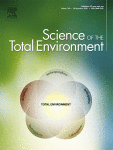Ver ítem
- xmlui.general.dspace_homeCentros e Institutos de InvestigaciónCIRN. Centro de Investigaciones de Recursos NaturalesInstituto de Recursos BiológicosArtículos científicosxmlui.ArtifactBrowser.ItemViewer.trail
- Inicio
- Centros e Institutos de Investigación
- CIRN. Centro de Investigaciones de Recursos Naturales
- Instituto de Recursos Biológicos
- Artículos científicos
- Ver ítem
Imidacloprid seed coating poses a risk of acute toxicity to small farmland birds: A weight-of-evidence analysis using data from the grayish baywing Agelaioides badius
Resumen
The aim of this study was to estimate the risk posed by imidacloprid (IMI) seed coating to passerine birds of the Pampa Region of Argentina using data specifically generated with the grayish baywing (Agelaioides badius). Median lethal dose (LD50) of the IMI-based formulation tested was 57.11 mg IMI/kg body weight (bw), with intoxication signs starting from 20.6 mg IMI/kg bw. The feed intake rate (FIR) was estimated experimentally as 4.895 g/day per bird,
[ver mas...]
The aim of this study was to estimate the risk posed by imidacloprid (IMI) seed coating to passerine birds of the Pampa Region of Argentina using data specifically generated with the grayish baywing (Agelaioides badius). Median lethal dose (LD50) of the IMI-based formulation tested was 57.11 mg IMI/kg body weight (bw), with intoxication signs starting from 20.6 mg IMI/kg bw. The feed intake rate (FIR) was estimated experimentally as 4.895 g/day per bird, representing 12.43% of bw. It was calculated that the ingestion of 7–10% of the FIR as treated seeds would be enough to achieve the LD50 for sorghum, corn, sunflower, and alfalfa, whereas consumption of 31 and 54% of FIR was necessary for oat and wheat, respectively. Based on spill data values available in the literature, it was calculated that, for most crops, a baywing would have to forage an area of field corresponding to less than 60 m2 to obtain the number of seeds required to reach the LD50. It was also shown that this number of seeds is coherent with the amount of seeds ingested in a bout. In a pilot study, all grayish baywings fed with millet seeds treated with 3 g IMI/kg died within three to five days of exposure. In Tier I risk assessment, the trigger value was achieved for all crops except soybean and a weight-of-evidence risk assessment was performed. All lines of evidence examined are consistent with the view that grayish baywings, and probably other small farmland birds, are exposed to a risk of acute toxicity and mortality under both worst-case and mixed-ration exposure scenarios. The possible impacts on bird species calls for an urgent reconsideration of IMI seed coating practices currently approved in the Pampa Region of Argentina and the various parts of the world where this practice is still in use.
[Cerrar]

Fuente
Science of The Total Environment : 142957 (Available online 14 October 2020)
Fecha
2020-10
Editorial
Elsevier
ISSN
0048-9697
1879-1026
1879-1026
Formato
pdf
Tipo de documento
artículo
Palabras Claves
Derechos de acceso
Embargado
 Excepto donde se diga explicitamente, este item se publica bajo la siguiente descripción: Creative Commons Attribution-NonCommercial-ShareAlike 2.5 Unported (CC BY-NC-SA 2.5)
Excepto donde se diga explicitamente, este item se publica bajo la siguiente descripción: Creative Commons Attribution-NonCommercial-ShareAlike 2.5 Unported (CC BY-NC-SA 2.5)

